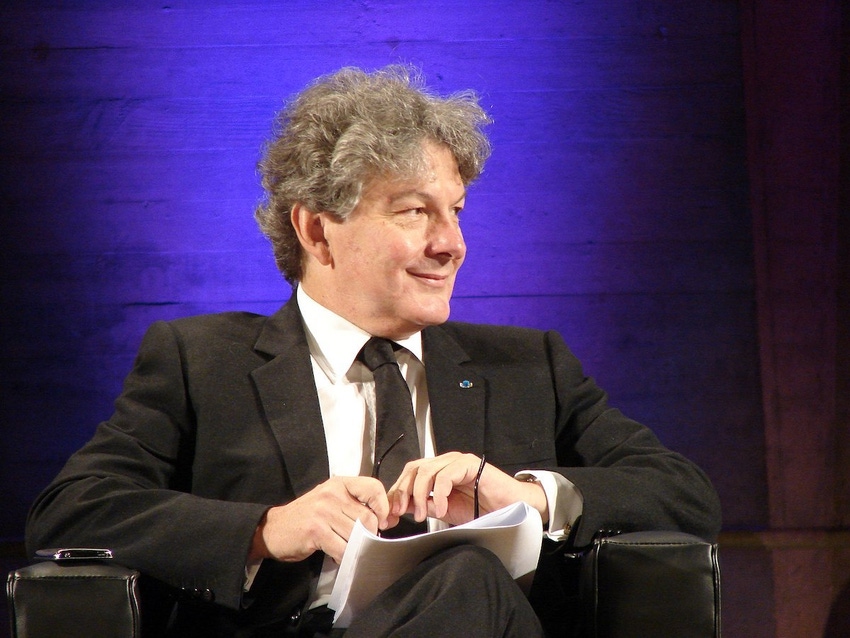German Huawei ban to cost €2.5B and take years, no thanks to EU
European Union authorities seem to have decided it's time to get tough on the controversial Chinese supplier, which has continued to extend its reach.

Huawei's European empire is slowly crumbling. Ejected from smaller markets such as Sweden and left to gradually rot in bigger ones like the UK, the controversial Chinese equipment maker now faces the prospect of a comprehensive EU-wide clampdown on the use of its products. Thierry Breton, a former telco boss who now works as the EU's internal market commissioner, sounds unimpressed that national governments have paid little heed to previous admonitions about Chinese suppliers – described as "high-risk vendors" (HRVs) in EU paperwork. Only seven countries had imposed "the necessary restrictions," he fumed in February. "This is not enough."
The most egregious offender is Germany. While companies there have taken steps to remove Chinese products from the sensitive "core," the control center of the network, each of Germany's big three mobile operators – Deutsche Telekom, Telefónica and Vodafone – continues to source radio access network (RAN) products from Huawei. The dependency is laid bare in reports by Denmark's Strand Consult. Fifty-seven percent of Germany's 4G RAN equipment was supplied by Huawei back in 2020, it previously calculated. By the end of last year, as much as 59% of the installed 5G equipment also came from the Chinese company.
The cost of replacing it now would run into billions of euros, according to a Barclays research note obtained by Light Reading. Its own estimate is that operators use Huawei across about 50% of their cell sites, which would equate to 46,000 sites in total. (Deutsche Telekom operates about 38,000 sites, according to Barclays, while Telefónica and Vodafone each maintain 27,000.) Putting replacement costs at about €50,000 (US$54,200) per antenna, Barclays reckons Deutsche Telekom would face a bill of €1.1 billion ($1.2 billion) to evict Huawei and that Telefónica and Vodafone would each have to spend about €700,000 ($758,750). To Light Reading, those estimates look conservative.
German reluctance to switch is partly economic and partly about the lack of supplier alternatives. Formally banning Huawei could elicit a trade response from China, hurting German carmakers and manufacturers of machine tools. China ranked as Germany's "largest trading partner for goods in 2022," according to an April statement issued by Germany's foreign ministry, which puts the volume of trade with China at nearly €300 billion ($325 billion).
As for the alternatives, only Sweden's Ericsson and Finland's Nokia currently measure up as viable suppliers of 2G to 5G products. Concerned about the prospect of a post-Huawei Nordic duopoly, operators have been trying to cultivate smaller rivals. A concept they back called open RAN is designed to support interoperability between vendors of different RAN components, allowing product specialists to compete. But it "does not yet allow for immediate large-scale deployment," said Deutsche Telekom as recently as February. One of the latest concerns to emerge is that its current specification is ill-equipped to handle massive MIMO, an antenna-rich 5G technology needed for busy areas.
Leave, but take your time
Regardless of what Breton thinks, this all means the likelihood of an immediate ban on Huawei is remote. Even the UK, which imposed restrictions back in 2020, is giving operators until the end of 2027 to have fully removed all Huawei products from their 5G networks. BT is shifting to Ericsson and heavier reliance on Nokia, which was already a supplier, but it still has thousands of Huawei sites in use. Vodafone has effectively made no progress on removing Huawei from about 6,000 of its 18,000 sites. It is determined to use open RAN instead but has only a small number of sites up and running.
Nor is Germany any kind of outlier within Europe. Strand Consult's report shows that numerous other countries in the region continue to buy from Chinese vendors, and mainly Huawei. At the end of last year, their share of installed 5G equipment was 53% in Hungary, 51% in Italy, 72% in the Netherlands, 38% in Poland, 34% in Portugal, 76% in Romania and 38% in Spain, to name just a few.
Installed Chinese 5G RAN in December 2022 (Source: Strand Consult)
(Source: Strand Consult)
In countries like Germany that have extensively deployed Huawei's products, a gradual phaseout is the only realistic scenario. This would mitigate the financial impact that Barclays notes and allow operators to book replacement costs as part of annual capex, something that already happens at BT. But it means a full swap-out could take many years. Deutsche Telekom, Europe's biggest operator, spends only about €300 million ($325 million) on capex in Germany each year, according to Barclays. That is just 27% of what the bank estimates it would cost to replace Huawei.
Whatever the rights and wrongs of banning Huawei, the swap-out bill has inevitably gone up while EU authorities have dallied. Clear legislation years ago would have provided certainty for national governments and telcos before 5G was widely deployed. Instead, there have been vague warnings and euphemisms about HRVs under a program the EU calls the "5G toolbox," which sounds more like a tiresome manual for RAN technicians than a must-read security pamphlet. On that basis, companies like Deutsche Telekom believed it was acceptable to retain Huawei in the RAN if they removed it from the core. The consequence may be that Huawei is still in Europe when the first 6G services are launched.
Related posts:
— Iain Morris, International Editor, Light Reading
About the Author(s)
You May Also Like











